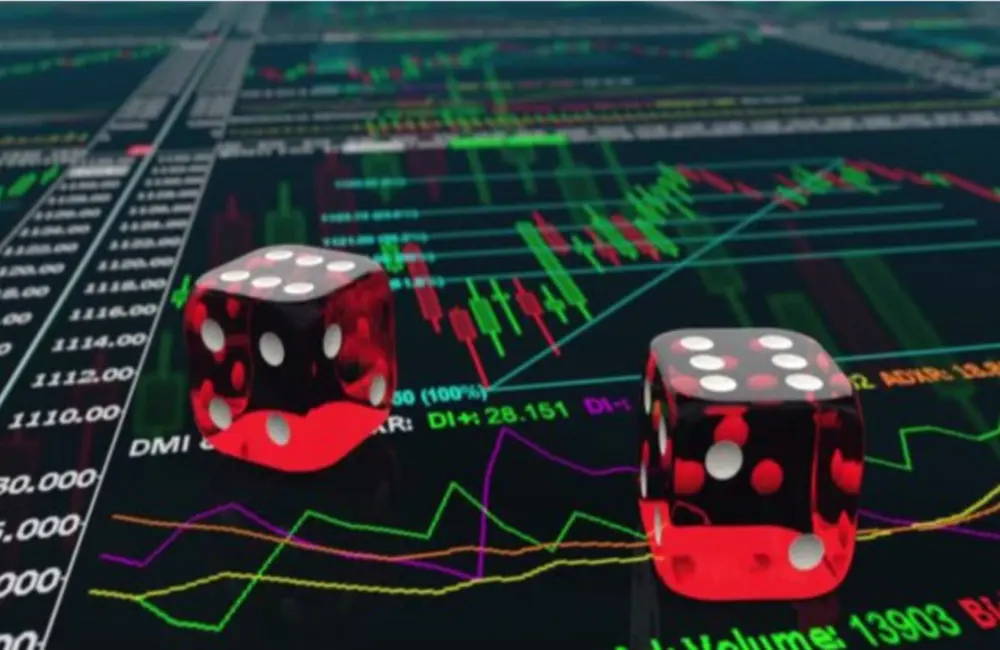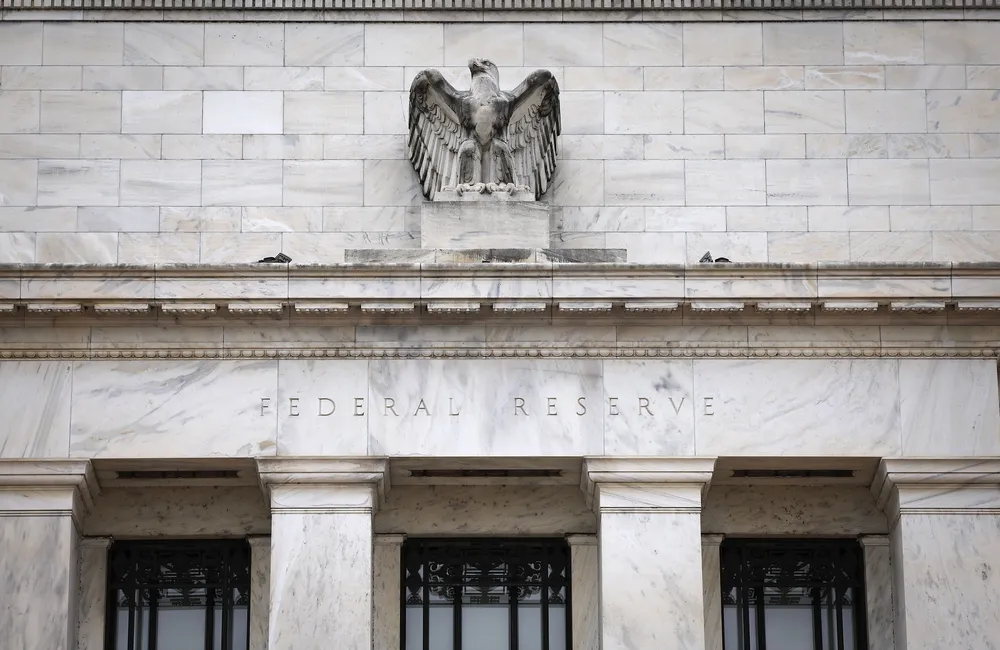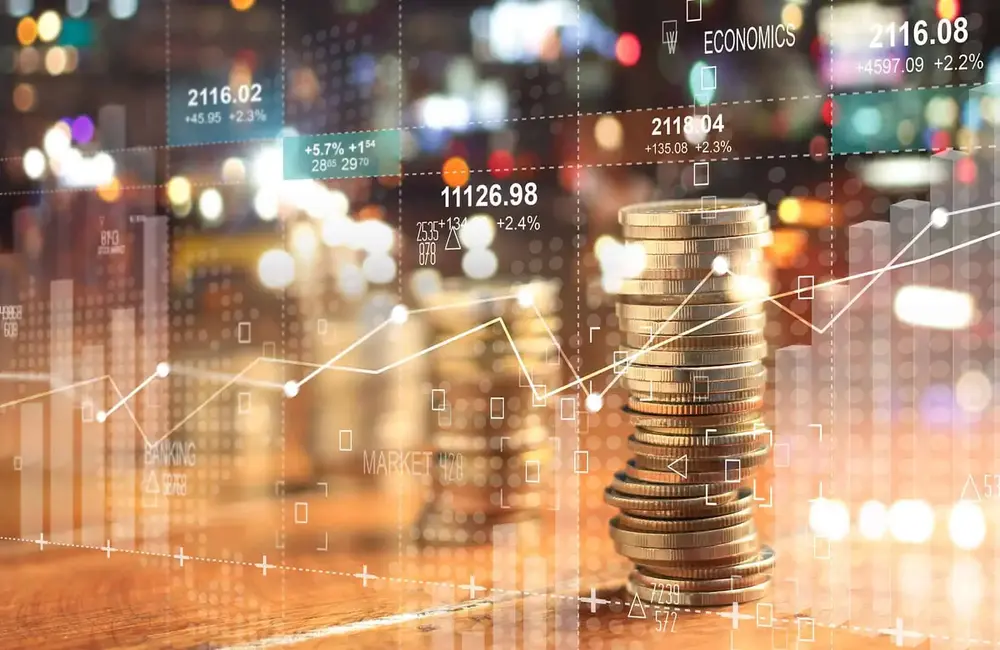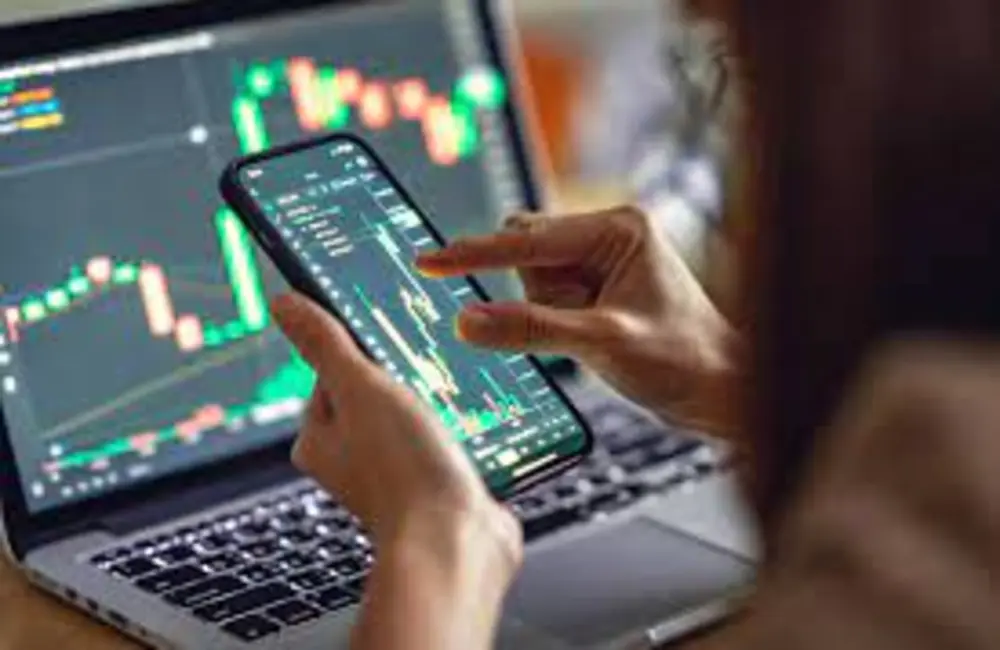ASX futures were up 101 points or 1.5 percent at 6810, in a bounce a day after the share market tipped into correction.
US stocks slide Thursday in yet another wild session as investors continue trying to figure out how monetary policy and the outlook for the economy will impact corporate profits and stock valuations.
The Dow Jones Industrial Average initially climbed about 600 points in the session, but was recently down 7 points, or less than 0.1 percent. The S&P 500 lost 0.5 percent, and the Nasdaq Composite, which erased all of its early gains, dropped 1.4 percent.
On the local front, the S&P/ASX 200 slumped 1.8% to 6838.8, edging into correction territory with the market now more than 10% below its August highs. Almost every sector closed lower on the day except for utilities and the energy sector, which added 1.2% and 2.1%, respectively.
Shares of Beach Energy climbed 8.8% and Santos added 3.6%, while Woodside Petroleum rose 2.5% after saying it would exit Myanmar due to a worsening human-rights situation there.
Tech stocks were the weakest performers, ending 5.0% lower. WiseTech dropped 10.0 percent, Codan was down 10.2 percent and Megaport closed 9.5 percent weaker. ANZ was the only major bank to end higher, up 1.1%.
Overseas
The Stoxx Europe 600 climbed 0.7 percent, recovering from an early drop. Asia-Pacific indexes had earlier sunk sharply, with gauges in China, Japan and South Korea closing at their lowest levels in more than a year.
In commodities, gold futures dropped 2% to $US 1795.70 a barrel; Brent crude dipped 0.2% to $US89.76; while iron ore gained 0.5% to US$138.75 a tonne.
Bond markets recovered from a day of heavy selling, with the yield on the Australian 10-year bond slipping to 2.02%, while the benchmark US 10-year Treasury yield fell to 1.80%. Yields fall when prices rise.
The Australian dollar was fetching 70.30 US cents just before 8.00 am AEST, having declined from the close of 71.11. The WSJ Dollar Index, which compares the US dollar to 16 other currencies, rose to 90.75, its highest since July 2020.
Asia
Chinese stock indexes ended at multi-month lows in a selloff across regional markets that included heavy losses for software, construction machinery and electronics companies. Investors could be a little more prudent before the upcoming Lunar New Year holiday, and want to hedge the risk of uncertainties from overseas markets, China Fortune Securities said.
Will Semiconductor, Sany Heavy and Yonyou Network Technology fell over 5% each. The Shanghai Composite Index dropped 1.8%, marking its lowest close since July. The Shenzhen Composite Index fell 2.9%, and ChiNext Price Index lost 3.3%, both their lowest closing levels in more than eight months.
Hong Kong’s Hang Seng Index fell 2.0%, with all sectors in the red, after the Chinese stock indexes ended at multi-month lows. China education stocks were among the weakest as it faces potential stricter regulations. China Education Group fell 24% and Hope Education dropped 13%. Tech stocks also fell, following a weak showing by the US market overnight. Alibaba Group Holding was down 7.2% and Meituan had lost 6.9%. Other big losers included China Aoyuan, which dropped 5.0% after it announced it will sell properties in Canada for C$215 million as part of attempts to tackle its liquidity problems.
The Nikkei index fell 3.1% to 26170.30 on Thursday from a recent 30670.10 high on 14 Sept as “the pace of the Fed’s hikes will likely be faster than expected,” says MUFG Bank’s chief Japan strategist Takahiro Sekido. While market participants already anticipated occasional rate increases at the end of this year, many investors, including American ones, assumed the speed of the increases would be gentler, he says.
Europe
European stocks gained in closing trade after early losses after the Federal Reserve yesterday signalled it would start raising interest rates in March. “Despite the more guardedly-positive tone prevailing now compared to when it was the Fed’s turn, this market doesn’t yet look like it wants to rally,” IG analyst Chris Beauchamp says. The pan-European Stoxx 600 added 0.7%.
In London, the FTSE 100 closed Thursday up 1.13 percent, bouncing back from the losses it had taken during the week.
“The stock market rollercoaster continues today after a sharply lower open in the wake of last night’s sharp post-Fed sell off and weakness in Asia, European markets have managed to slowly get themselves off the canvas,” CMC markets says.
The FTSE 100 however was able to recover, returning to positive ground with a broad-based outperformance lifting, with financials, energy and healthcare passing the baton for the gains, it said.
North America
US stocks dipped Thursday in yet another chaotic session that has investors scrambling to figure out how monetary policy and the outlook for the economy will play out in corporate profits and valuations. The Dow Jones Industrial Average gained as much as 600 points earlier in the day, but was down 7 points, or less than 0.1%. The S&P 500 was down 0.5 percent, and the Nasdaq Composite scope retreated from its morning gains, dropping 1.4 percent.
The span between highs and lows on Thursday isn’t as wide as other sessions this week, but it continues a streak of erratic trading. The VIX, a gauge of anticipated volatility, rose to its highest level in a year on Wednesday. Markets have been roiled by fears about central-bank policy on interest rates and inflation, and geopolitical tensions surrounding Russia.
The volatility is a reflection of the challenges facing investors not only in reacting to the Federal Reserve’s plans for monetary policy but also in getting ready to live with what will be a long-term shift in that policy, said Yung-Yu Ma, the chief investment strategist at BMO Wealth Management.
At this point, it’s tough to determine “what gets priced in and when,” he said. If inflation falls sharply on its own, that will relieve some of the pressure. If it doesn’t, and the Fed needs to be aggressive in combating it, “that’s going to take its toll on the market.”
The question isn’t what the Fed is going to do for many traders, said David Bahnsen, chief investment officer at Bahnsen Group, but what other traders think it will do and how to bet on that. The result, he said, is a market chock full of leveraged trades that will have to be unwound quickly if they don’t work out.
“There’s no lesson to any of it,” he said. "It's all a game. But it does add to volatility.”
The Fed’s announcement this Wednesday only intensified that. As expected, the central bank signaled that it would start raising interest rates in mid-March, but investors were shocked by Chairman Jerome Powell’s hawkish tone in his press conference, as he repeatedly emphasized the bank’s intention to battle inflation. That triggered a brutal selloff in the markets.
The inflation question is all-important, said Mark Grant, a strategist at B. Riley Securities, but the Fed hasn’t given the market sufficient guidance on the specifics of how it intends to battle inflation.
This ongoing uncertainty with the Fed is hanging over the economy,” he said. “Everyone’s sitting around trying to figure out what to do.”
The most recent reports on the economy offered a bit of good news. The economy expanded at a 6.9 percent annualized rate last quarter, the largest one-year increase since 1984. Economists had predicted 5.5% growth, driven by consumer spending, business investment and efforts to restock inventories. In a separately released report, weekly jobless claims dropped by 30,000, the most recent evidence of a healthy job market.
Earnings season, which some investors see as the next major test of whether the stock market’s sky-high valuations can be justified, is still continuing, even if it’s being overshadowed by economic questions.
McDonald’s fell 0.4 percent after the company missed analysts’ profit estimates even as sales increased. Blackstone climbed 6.8 percent after it said that net income nearly doubled. Mastercard added 1.7 percent even after the company reported its operating expenses had surged.
“What we’re looking for in this earnings season is whether we’re seeing inflationary pressures and also margins whether companies can hold on to their profits,” said Fahad Kamal, chief investment officer at Kleinwort Hambros. “Can they push through prices, can they maintain pricing power?” With central banks pulling back on liquidity, profit margins are especially critical to maintain, he added.
The yield on the 10-year Treasury note fell to 1.807% Thursday from 1.845%. Yields on shorter-dated government bonds remained higher, with the two-year Treasury yield at 1.19 percent.
The greenback found its footing with the WSJ Dollar Index climbing to its highest level since July 2020. Precious metals declined, with gold 2% lower at $1,793.30.
“The US yields are rising as the hurdle of rate hikes are on the rise. There is also a bit of a safe-haven play in there as well, that is going to be support environment for the dollar,” said Mr. Kamal.
Apple, Visa, and food and beverage behemoth Mondelez were scheduled to report Thursday after the markets close.
Netflix gained 7.5 percent after the billionaire investor William Ackman said his hedge fund had purchased 3.1 million shares. Moderna dropped 4.1 percent after the company said it began testing a version of its Covid-19 vaccine that is designed to combat the Omicron variant.
Teradyne, an equipment maker, plunged 22% after its profit forecast lagged analysts’ estimates. Company insiders have sold thousands of shares in recent days, according to regulatory filings. The software company ServiceNow climbed nearly 9.1% when it surpassed the revenue estimates of Wall Street.
Oil prices slipped. US crude was down 0.85% at $86.61, after reaching a new seven-year peak. Nordic bank SEB said declining inventories have been driving up prices.
Cryptocurrencies crept up, though bitcoin continued its fall for a third day, trading at around $35,960. Meta Platforms, once called Facebook, is scrapping its plans for a cryptocurrency payments network and is selling its tech to a tiny bank, The Wall Street Journal said.
























